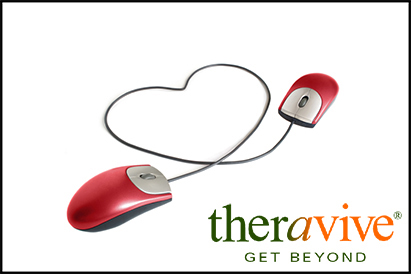 For better or worse, technology is here to stay. Technology is neither good nor bad, it just is. Many of us complain about how attached kids are to their phones, and their ear-buds, and their laptops, and their video games. Adults are just as hooked on the amazing technical bells and whistles that are new and improved every year. How many times have you seen four people at a table in a restaurant in deep conversations—with their phones?
For better or worse, technology is here to stay. Technology is neither good nor bad, it just is. Many of us complain about how attached kids are to their phones, and their ear-buds, and their laptops, and their video games. Adults are just as hooked on the amazing technical bells and whistles that are new and improved every year. How many times have you seen four people at a table in a restaurant in deep conversations—with their phones?
Technology brings us education, entertainment, and tools to be more efficient and productive. It is truly amazing. However, it can also distract us, distance us from friends and family, and become a bad habit. This article is not intended to be anti-technology, but instead to encourage acceptance and management of the increasing presence of technology, and to find ways to incorporate it into our lives in healthy ways—ways that enable us to control the technology that’s all around us, instead of our gadgets and devices controlling us (When Technology Addiction Takes Over, 2008) .
Deep down, we may know that we should put the cell phone down while our spouse or child is talking to us. We know we don’t need to check our work email on our day off, but we feel compelled to check, and a little anxious if we don’t. The internet can carry us down the rabbit hole, and before we know it, it’s two in the morning, and we drank a whole six-pack of cola. There’s just so much to see and do!
Are you too connected?
So, who’s running the show, anyway, you or your device? That’s a decision we all have to make. What role do we want technology to play in our lives? We love the convenience, the instant connectivity, the up-to-the minute updates on social media, but do we need it—during dinner? Is there a cost to our device obsession? It can hard to admit that we have lost control of the devices in our lives. Sometimes it takes the complaining of our loved ones for us to see that we have a problem. How do we know if our relationship with technology is an unhealthy one, and if we and our devices need to take a break from one another?
- Technology is taking away from the time you’d otherwise spend socializing with friends or family, relaxing, or doing a hobby you enjoy.
- You check your email every few minutes, or get up at night just to check your messages
- You’ve lost interest in hobbies and social interaction
- You’re impatient with others or with activities because you want to get back to the computer/phone/tablet
- You get irritated when you’re interrupted while on the computer, or using a device
- You use devices while you eat, drive, walk, and exercise
- You aren’t able to turn off the phone, tablet, or computer
- You feel anxious when you’re unable to check your email or social media
- You feel the need to keep devices nearby, or easily accessible, at all times
- You’re developing physical issues like carpal tunnel, headaches, or eye strain
- Your family complains about the time you spend using technology
- You tell yourself and others than you will spend less time with devices, but you can’t seem to stay away (Technology, 2014)
These problems can vary in severity, and technology overuse may not be noticed until it is really a problem. People sometimes underestimate how hooked they are on technology, and how hard it is to decrease use. It’s important to remember that we need to be in charge of our use of technology, and the role we let it play in our life. If it’s damaging or replacing personal relationships, it’s time to take control.
 Regaining Control
Regaining Control
When you realize that you need to curb your time on the internet, or the phone, or the tablet, it can be hard to know where to start. You feel like a slave to your gadgets, with you working for them, instead of them working for you. It can feel like technology is essential, but is it really? Think about how technology enhances your life, as well as how it may be limiting your life. Our interaction with technology can become mindless and automatic, so it’s important to think about how you would like to interact with technology. One writer and mother, Adina Kalish (2014) decided to change her relationship with technology, so she could improve her relationship with her kids. She called this her “e-tox”, and she has some ideas for those of us who want to unplug and evaluate our use of technology. She recommends:
- Admit you have a problem. Awareness that something isn’t right is always the first step. It may not be a big issue right now, but awareness of potential issues is important.
- Decide where to start: pick a time to unplug when you can get away from your regular routine.
- Set reasonable expectations and parameters: Perhaps you start with turning off the computer for a whole day, or unplugging for 30 minutes a day, or only checking your email one time a day. There is no need to go “cold-turkey”, and that may set you up for failure.
- Understand and accept you will have some withdrawal pains. This could include restlessness, irritability, anxiety, or even depression. We can become addicted to technology, and the way it fills our time and consumes our attention.
- Try a reality check. Do you really need to be accessible 24/7 by anyone and everyone? Are you that important? Are they? Can some things wait?
- Take an inventory. What’s really going on? Are you trying to do too many things at one time? Have you spread yourself too thin because you have trouble saying “no”? Are your devices distracting you from other things you’d rather not deal with?
- Connect with your body. Too much technology and not enough exercise and time in the natural sunlight can unbalance us. We need the good endorphins from exercise. This can help us think more clearly and make better decisions.
- Make amends. There may be people you need to apologize to and make amends to because of your behavior with technology.
- Have car rules. Put phones and devices away in the car. Use this a time to reconnect with your friends, loved ones, or colleagues.
After your “e-tox”, gradually re-introduce devices and technology in a more conscious way (Kalish, 2013).
Of course, after your “e-tox” it’s possible that you will “relapse”. It’s easy to let technology regain the reigns again, unless you stay aware and make thoughtful decisions about your relationship with technology. Technology is not good or bad; it is just another part of life—like food and money- that we have to relate with in a conscious way. With some awareness, you will gradually find a balanced way to enjoy technology and all it has to offer, without sacrificing your health or your relationships.
_________________________________________________________________________________________________________________________________
Kalish, A. (2013, September 17). The 12 Step E-tox: How to curb your electronic device addiction. Retrieved September 6, 2014, from http://www.huffingtonpost.com/2013/09/17/12-step-e-tox-curb-electronic-device-addiction_n_3936807.html
Technology: The new addiction? (2014). Retrieved September 5, 2014, from http://apps.cignabehavioral.com/web/basicsite/bulletinBoard/technologyNewAddiction.jsp
When technology addiction takes over your life. (2008). Retrieved September 6, 2014, from http://www.webmd.com/mental-health/features/when-technology-addiction-takes-over-your-life?page=3